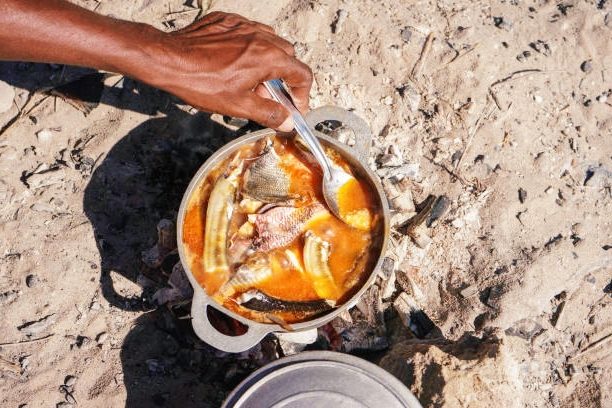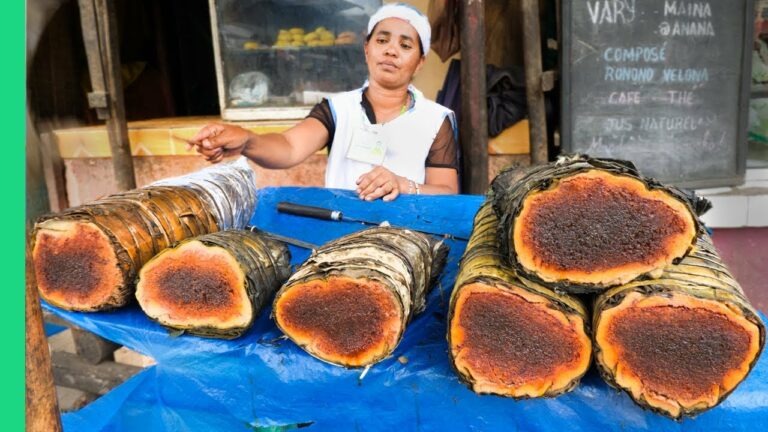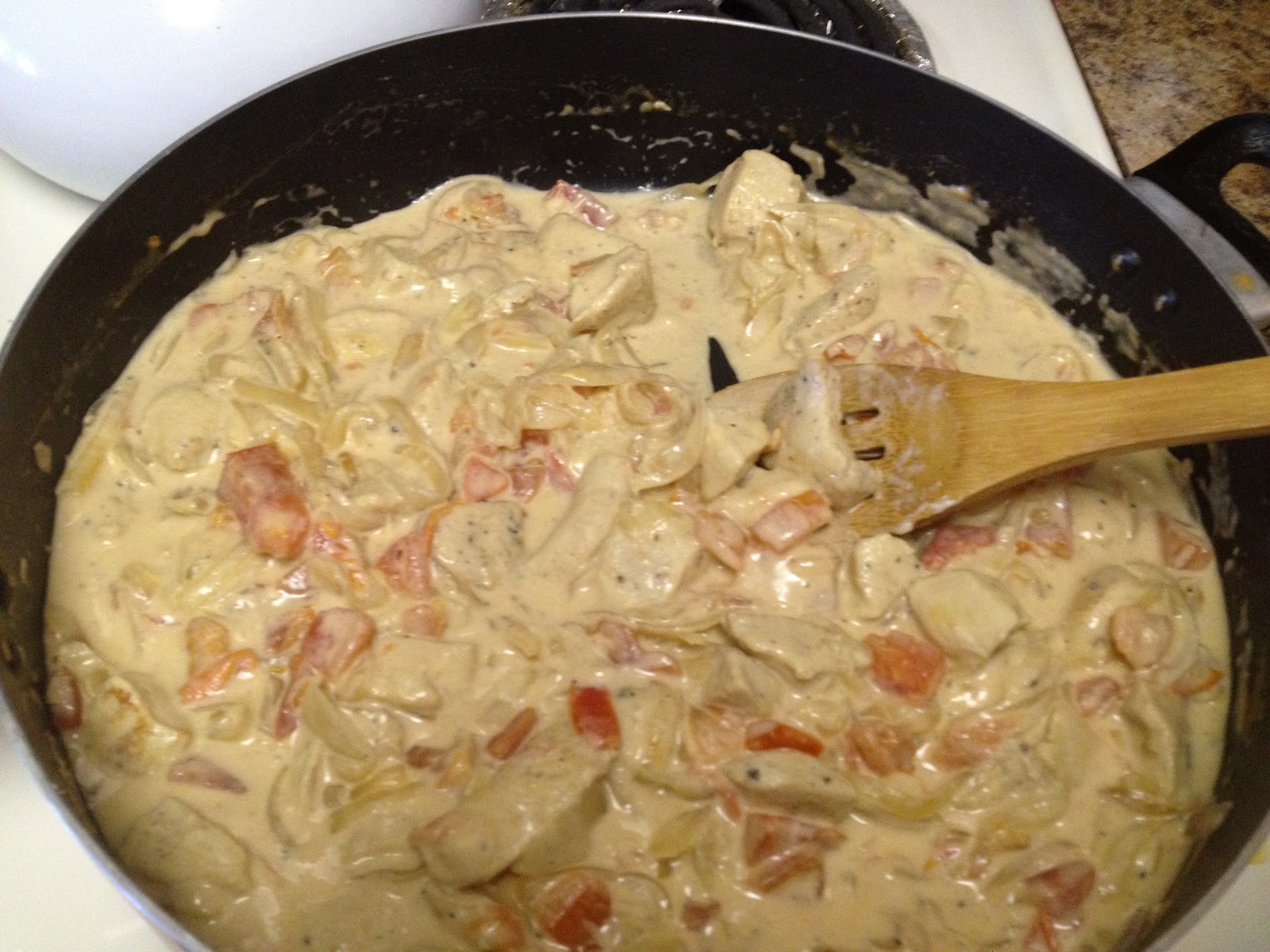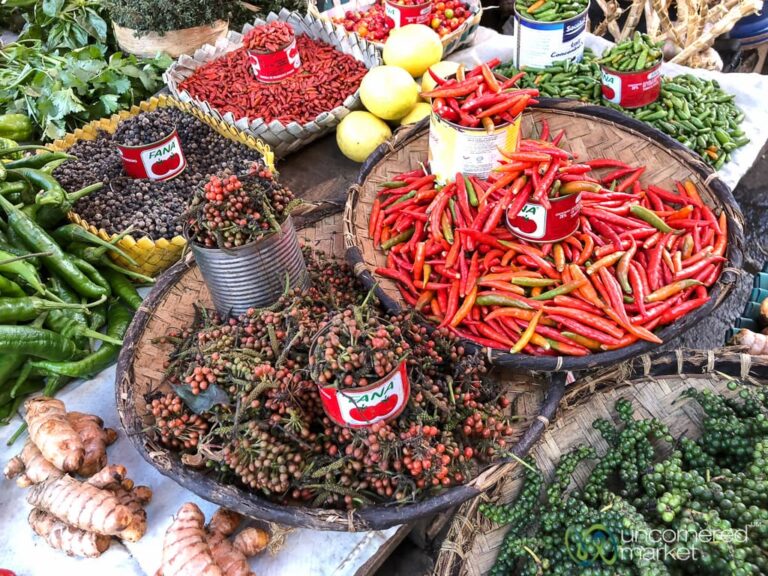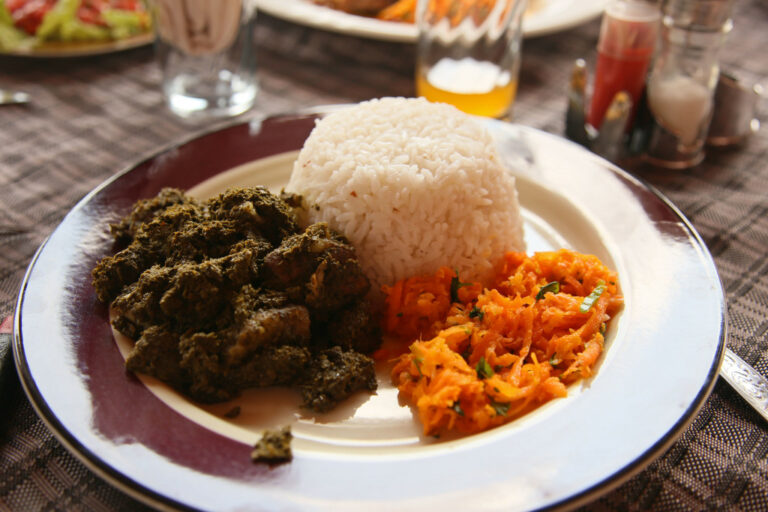Introduction: Exploring the Lesser-Known Side of Madagascar Cuisine
Madagascar, an island nation off the coast of southeastern Africa, is well-known for its stunning landscapes, unique wildlife, and vibrant culture. But when it comes to its cuisine, many people may only be familiar with a few dishes like the national staple of rice and meat or the popular snack of deep-fried cassava. However, Madagascar has a diverse array of regional dishes and ingredients that are lesser-known but equally delicious and worth exploring.
From the northern city of Antsiranana to the central highlands of Vakinankaratra, and the western coast of Mahajanga, each region of Madagascar has its own distinct culinary traditions and flavors. Let’s take a closer look at some of the lesser-known regional dishes and ingredients that make Madagascar’s cuisine truly unique.
Antsiranana Region: Discovering the Unique Flavors of Akoho sy Voanio
Located in the far north of Madagascar, the Antsiranana region is home to one of the island’s most famous dishes, Akoho sy Voanio. This hearty and flavorful chicken dish is made with tender pieces of chicken cooked in a sauce made from onions, garlic, ginger, tomatoes, and voanio, a variety of local wild pepper. The dish is often served with rice or cassava and is a popular choice for celebrations and special occasions.
The unique taste of Voanio pepper is what sets this dish apart from others. It has a citrusy, slightly sweet flavor with a hint of heat that complements the savory chicken perfectly. While voanio pepper is not widely available outside of Madagascar, it can be substituted with other citrusy peppers like lemon drop or aji limon to recreate the dish’s distinct flavor.
Toamasina Region: Unraveling the Secrets of Ravitoto
In the northeastern region of Toamasina, Ravitoto is a traditional dish made from cassava leaves, pork, and coconut milk. The leaves are boiled, mashed, and then mixed with onions, ginger, garlic, and cubed pork to create a rich and flavorful stew. Coconut milk is then added to give the dish a creamy texture and a slightly sweet, nutty flavor.
Ravitoto has long been a staple dish of the Betsimisaraka people of Toamasina and is a perfect example of how Madagascan cuisine incorporates both local and global ingredients. Cassava leaves are a common ingredient in many African cuisines, while coconut milk is a product of the region’s colonial history. The combination of these ingredients creates a dish that is both familiar and uniquely Madagascan.
Vakinankaratra Region: Savoring the Taste of Vary sosoa
In the central highlands of Madagascar lies the Vakinankaratra region, known for its scenic landscapes and cooler climate. It is also home to a simple but delicious dish called Vary sosoa, which translates to “sour rice.” This dish is made by fermenting cooked rice with water and a little bit of leftover rice from the previous day. The mixture is left to ferment for a day or two, resulting in a slightly sour, tangy flavor.
Vary sosoa is often served with a variety of side dishes like beans, meat, or pickled vegetables. It is a perfect example of how Madagascan cuisine uses fermentation as a technique to enhance the flavor of everyday ingredients.
Mahajanga Region: Indulging in the Delightful Flavors of Akoho misy sakamalao
On the western coast of Madagascar lies the city of Mahajanga, known for its sunny weather and stunning beaches. It is also home to one of the island’s most beloved dishes, Akoho misy sakamalao, which translates to “chicken with ginger.” This dish is made by marinating chicken pieces in a mixture of ginger, garlic, onions, and soy sauce before being stir-fried with more ginger and green onions.
The result is a fragrant and flavorful dish that is both savory and slightly sweet. Ginger is a common ingredient in Madagascan cuisine and is used in many dishes for its unique aromatic qualities.
Conclusion: Embarking on a Culinary Adventure Across Madagascar’s Regions
Madagascar’s cuisine is a reflection of its rich cultural heritage and abundant natural resources. From the lush forests of the east to the dry savannas of the west, each region of Madagascar has its own unique flavors and ingredients that are worth exploring. Whether it’s the tangy sourness of Vary sosoa or the fragrant ginger of Akoho misy sakamalao, there’s something for every palate in Madagascar’s lesser-known regional dishes. So why not embark on a culinary adventure and discover the hidden flavors of Madagascar for yourself?

